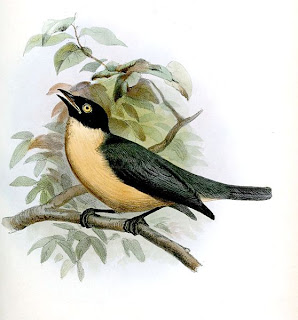Prof. Kai Larsen, Legend of the Thai Flora
Professor Kai Larsen (K.Larsen) passed away in Denmark on Thursday, August 23, 2012 in his 86th year. He was a well-known botanist and a Professor of botany at Århus University, Denmark. In 1963, Professor Larsen, in collaboration with Professor Tem Smitinand and other legendary botanists, started the Flora of Thailand Project under Thai-Danish collaboration. He had directed the extensive Project, which aims to describe all of Thailand flora, and had actively participated in it since then throughout the years in spite of his age. His extensive lifelong scientific works and his untiring will have inspired hundreds of botanists and he shall long be in our memory always.
Genera:
Rubiaceae | Kailarsenia fragrant plant from Southeast Asia
Rubiaceae | Larsenaikia once endemic Australian species of Gardenia
Gesneriaceae | Kaisupeea B.L. Burtt honours Kai and Supee Larsen
Zingiberaceae | Larsenianthus W.J.Kress & Mood, Asian Gingers genus with four species
Species:
Palaeontology/Leguminosae | Bauhinia larsenii • fossil legume from Guangxi, China
Balsaminaceae | Impatiens larsenii T.Shimizu -- Acta Phytotax. Geobot. 28(1-3): 33 (1977).
Lauraceae | Cassytha larsenii Kosterm. -- Rheedea 4(1): 14 (1994).
Leguminosae | Crotalaria larsenii Niyomdham -- Thai Forest Bull., Bot. 11: 139 (1978).
Primulaceae | Primula larsenii C.M.Hu -- Nordic J. Bot. 10(4): 399 (1990).
Rubiaceae | Lasianthus larsenii H.Zhu -- Acta Bot. Yunnan. 22(4): 395. 2000
Rubiaceae | Mouretia larsenii Tange -- Nordic J. Bot. 17(2): 128 (1997).
Zingiberaceae | Caulokaempferia larsenii Suksathan & Triboun -- Edinburgh J. Bot. 60(3): 513. 2004
Zingiberaceae | Cornukaempferia larsenii P.Saensouk -- Nat. Hist. J. Chulalongkorn Univ. 7(2): 115 (-118; figs. 1-2). 2007
Zingiberaceae | Curcuma larsenii Maknoi & Jenjitt. -- Gard. Bull. Singapore 58(1): 41 (-44; plate 1(loose, unpaged), fig. 1). 2006
Zingiberaceae | Hedychium larsenii M.Dan & C.S.Kumar -- Nordic J. Bot. 19(3): 333 (1999).
Zingiberaceae | Kaempferia larsenii Sirirugsa -- Nordic J. Bot. 9(3): 257 (1989).
Zingiberaceae | Zingiber larsenii Theilade -- Nordic J. Bot. 19(4): 404 (1999).
เปราะภูนวล Caulokaempferia saxicola K. Larsen
ชื่ออื่น เปราะหิน | วงศ์ Zingiberaceae
ไม้ล้มลุกเกาะตามโขดหิน สูงได้ประมาณ 30 ซม. ลำต้นเทียมเป็นกาบใบซ้อนกัน เกลี้ยง มี 5-7 ใบ เรียงเวียนสลับ รูปใบหอก ยาว 6-13 ซม. ใบด้านล่างขนาดเล็ก กว้าง ไร้ก้าน ปลายใบแหลมยาว ขอบใบบาง ลื้นใบบาง ปลายกลม ช่อดอกออกที่ปลายลำต้น ดอกสีเหลือง ส่วนมากมีดอกเดียวในแต่ละใบประดับ ใบประดับมี 5-10 ใบ เรียงตรงข้าม 2 แถว ยาวประมาณ 3 ซม. กลีบเลี้ยงมีขนสั้นนุ่มด้านนอก ติดกันเป็นหลอด ยาว 7-9 มม. ปลายแยกเป็น 3 กลีบรูปสามเหลี่ยม ยาว 2-3 มม. กลีบดอกติดกันเป็นหลอด ยาวประมาณ 2-2.5 ซม. กลีบข้างขนาดเท่าๆ กัน รูปสามเหลี่ยม ยาว 0.7-1 ซม. เกสรเพศผู้ที่เป็นหมันคล้ายกลีบดอก รูปไข่ กลีบปากคล้ายรูปลิ้น ยาวได้ประมาณ 1.7 ซม. ผลแบบแคปซูล ยาวประมาณ 2.2 ซม. เปราะหินเป็นพืชถิ่นเดียวของไทย พบเฉพาะทางภาคตะวันออกที่อุทยานแห่งชาติเขาใหญ่ จังหวัดนครนายกและปราจีนบุรี โดยเฉพาะบริเวณเขาเขียว ขึ้นเป็นกลุ่มตามโขดหินที่มีมอสหนาแน่นใต้ร่มเงาในป่าดิบเขา ระดับความสูง 900-1100 เมตร
ภาพ: สุคนธ์ทิพย์ ศิริมงคล (เขาใหญ่ นครนายก)
เอกสารอ้างอิง: Larsen, K. (1964). Studies in Zingiberaceae IV. Botanisk Tidsskrift Vol. 60 part 3: 171 .
ข้อมูลแสตมป์
ชุดที่ 878: ตราไปรษณียากรชุดปีใหม่ 2553
วันแรกจำหน่าย 15 พฤศจิกายน 2552
ชนิดราคา 3.00 บาท (4แบบ)
จำนวนพิมพ์ 1,000,000 ดวงต่อแบบ
ขนาด 29X24 มม. (แนวนอน)
ผู้ออกแบบ ปาริชาติ ทัศนเทพ (บริษัท ไปรษณีย์ไทย จำกัด )
บริษัทผู้พิมพ์ ไทยบริติช ซีเคียวริตี้ พริ้นติ้ง จำกัด (มหาชน) ประเทศไทย
วิธีการพิมพ์และสี ลิโธกราฟี่ - หลายสี
จำนวนดวงในแผ่น 10 ดวง
















































